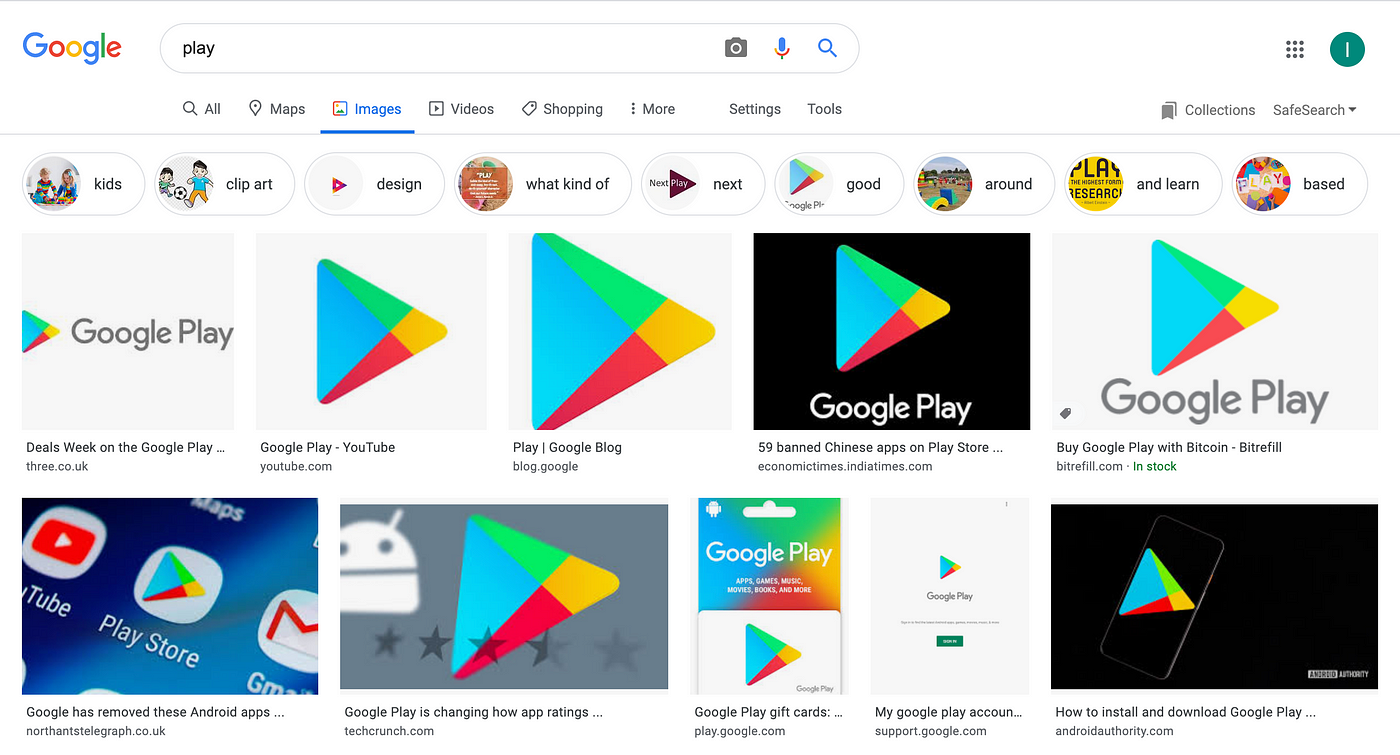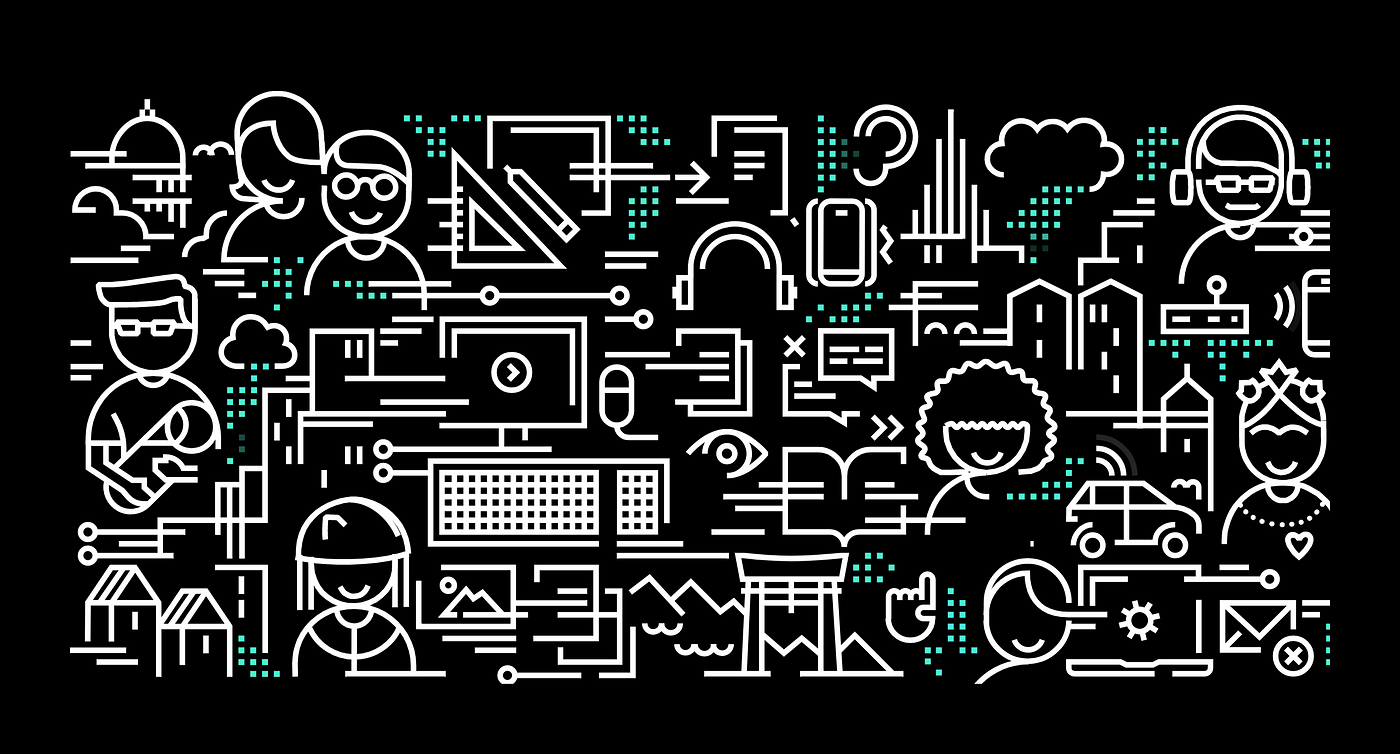Neurodiversity and profit-based product design
The internet is easily the most important invention since electricity. It contains all the worlds information, enables face to face communication from two separate continents and, I’m not sure how I lived without Sat Nav… But it scares me
– Tom Brenner for The New York Times
I struggle to keep on track with my tasks, I’m actually procrastinating on a pretty important one with every word I type… But with attention being the commodity that every platform trades in, I’m worried we’re actively designing the destruction of concentration and even neuro-development. This post was written after the millionth time opening tvOS YouTube, for a specific reason, — research for an upcoming lecture — just for my memory to be completely wiped as I’m hit by a wall of entertainment, specifically chosen just for moi. This blend of YouTube distraction and ‘constructive’ procrastination got me thinking.
Gifs, another bane of my life, so entertaining, yet so distracting…
I’ve been meaning to write about my specific experience with digital products, as someone that struggles with Dyslexia and ADHD symptoms since my brain injury in late 2017. I went on a journey of recovery and it made me think about my brain, and the attention economy very differently.
“Everything is design. Everything!” — Paul Rand
Everything is designed, down to researched techniques on how to suck every last second of a persons attention. Tests consistently tweak the platforms in their favour, every decision they make aimed to keep eyes on the product longer and feed the user one more ad. I have to wonder if there’s going to be serious consequences in the near future. Did my dyslexia cause me to avoid reading or did avoiding reading cause my dyslexia…
“There is also some evidence that children who watch a lot of television during the early elementary school years perform less well on reading tests and may show deficits in attention.” — Dr. Jennifer Cross
Studies are beginning to show the detrimental effect screens are having on child development. This Harvard article discusses how screens disturb and restrict children’s interests, affecting play, learning, language and sleep. They even link to a “Clinic for Interactive Media and Internet Disorders (CIMAID)”.
“iNtErNeT DiSoRdErS”!

Type in play to Google and this is what you get…
As a designer and someone with developmental/learning “disorders”, I think about the affect products, services and experiences have on the brain. Before my brain injury, I came up with a saying that stuck with me; “design for every brain”. This saying wasn’t because I was reflecting on the troubles I have in today’s work environment, which there’s a decent amount, daily. It came from hearing my mother ask, “what’s a character”, being in real stress over the process of filling in a form online, using a magnifying glass to read a manual because the text was so small and low contrast it was barely visible… If you design for the person with no technological experience it makes the design clearer for everyone.

Vote for Pedro! ( And design better products )
As product and UX designers it’s our responsibility to design with the user in mind, in a way that maximises profits for the product or service. Maybe it’s time the platforms are held responsible for potentially causing disorders, as long as they profit. Should there be a distraction-free version of everything? Should there be a paid option you can configure to your liking? Should we take a magnifying glass to society and ask if we’re really thinking about what we are doing with this technology.
The sad fact is, unless it’s more profitable for the ‘too big to fail platforms’ to design for everyone, they won’t
Designers are employed by companies and there’s little they can really do besides consider these issues and the effects people experience. But designers can ask new questions.
- If we forget the idea that reading and writing are the only paths to learning, can we redesign a learning experience that is actually effective and fun?
- If people are developing internet disorders, how can I design a solution to the problems they face?
- If work is going to be increasingly remote and digital how can we design a better work environment for everyone?
- If neurodiversity is going to become more important in digital design, how can I best design for a spectrum of users?
Thank you unsplash
Screens aren’t going anywhere, and as our lives become more complected and disrupted by technology, internet disorders are likely going to keep emerging, people are going to become more neurodivergent. Neurodiversity isn’t a bad thing, my working memory might be a problem with the bombardment of ads and curated media but my creative thinking and problem solving is a distinct advantage. With 1 in 4 people suffering from a mental illness at some point in their lives, 1 in 4 people facing dementia and 1 in 3 people heading for brain injury, that’s almost everyone! Understanding symptoms, strengths and weaknesses is key.
You can’t mould a person into your ideal user but you can design a product, ideal for your user
 The wonderful resource that is https://www.microsoft.com/design/inclusive/
The wonderful resource that is https://www.microsoft.com/design/inclusive/
Microsoft Design are doing a great job and creating a series of documents for designers to consider when designing digital products. And Mismatch is a wonderful book on the topic, written by Kat Holmes and John Maeda. Design accessible as a minimum, design inclusively if you can. ✌️
Rant over. After three hours, I’m going to return to YouTube to find reference videos for the first three and a half-hour lecture I’m giving students on design, this week. Wish me luck.